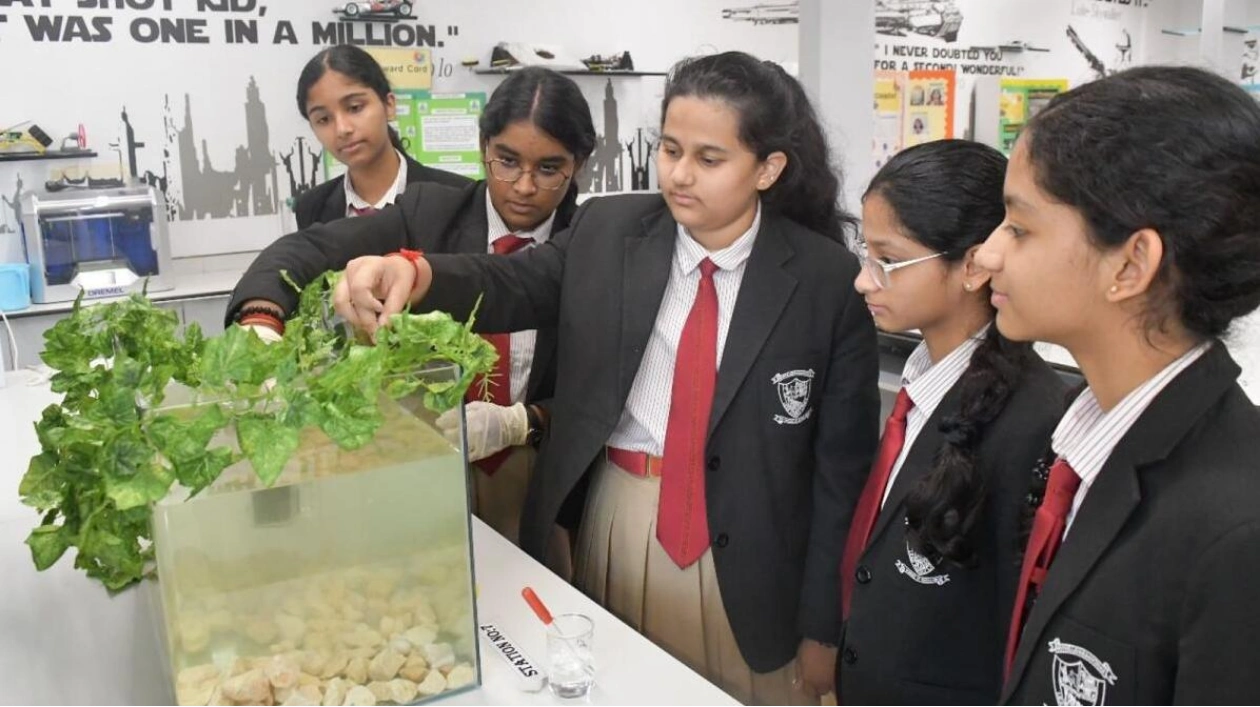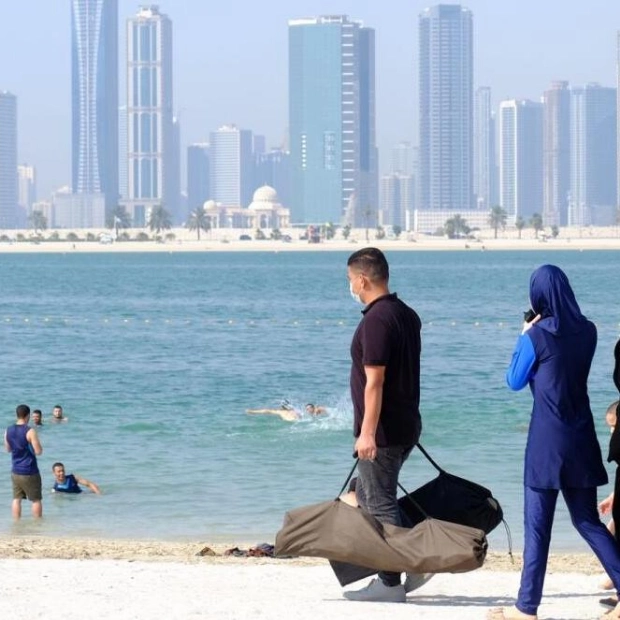A group of Grade 10 students in Dubai has developed a tool designed to make the ocean a safer environment for marine life, ranging from fish to coral reefs. The increasing levels of carbon dioxide in the atmosphere not only affect the air we breathe but also impact our waters. Approximately 30 percent of atmospheric carbon dioxide is absorbed by the ocean, causing changes in acidity levels that affect underwater ecosystems. Despite the complexity of this environmental issue, students at GEMS New Millennium School NMS have demonstrated that advanced degrees are not necessary to address it. They have created Aquatral, a device capable of balancing ocean acidity to provide a safer habitat for marine life.
Agnes Binosh, a student involved in the project, explained the functionality of Aquatral: "This device was designed to counteract the oceanic pH imbalance caused by rising carbon dioxide levels. The idea was sparked by the urgent need to proactively mitigate the detrimental effects of ocean acidification on marine life and ecosystems." Essentially, Aquatral carefully introduces a base into ocean waters to neutralize acid levels. Tarana Hari Krishnan, another student involved, emphasized the importance of the device's consistent ability to neutralize acidity and its reliability over time. They sought feedback from industry experts to further refine the device.
Alaina Manoj Mathew, another team member, highlighted the meticulous design process: "We took into account various factors, including the device's size and precision in delivering base solutions. This detailed design phase aimed to produce a device that effectively addresses oceanic pH imbalance." After the design phase, prototypes of Aquatral were developed and rigorously tested in controlled environments to assess their performance and efficiency.
The pH sensors in Aquatral ensure that only specific levels of base are dispensed, preventing an excess of sodium hydroxide that could raise pH levels. The goal is to create a neutralized environment in the oceans. If successful, this project could positively impact coastal communities, fisheries, and maritime businesses, enhancing their economic and social well-being. By mitigating the harmful effects of ocean acidification, the device aims to strengthen marine ecosystems and make them more resilient to environmental changes.
The Aquatral device aligns with the United Nations' Sustainable Development Goals 6 and 13. Daya Arun, another student, explained: "By neutralizing ocean acidity caused by increased industrial effluence and carbon dioxide, it supports SDG 6 (Clean Water and Sanitation) by preserving marine ecosystems, agriculture, and water quality. Additionally, by addressing ocean acidity, it indirectly supports SDG 13 (Climate Action) by reducing the adverse effects of acidification on marine life and ecosystems, which are vital for climate regulation."
Ocean acidification, which has been increasing since the Industrial Revolution due to fossil fuel burning and land use changes, has led to more acidic waters as the ocean absorbs a third of this carbon. This acidification affects global oceans, coastal estuaries, and waterways, which are critical to economies dependent on fish and shellfish. Acidification can impair some fish species' ability to detect predators, potentially endangering these organisms and disrupting the marine food web. By maintaining balanced pH levels, marine life, including coral reefs, shellfish, and fish populations, can be protected from the harmful effects of ocean acidification, thereby supporting marine biodiversity. Balanced pH levels are essential for maintaining water quality, making it suitable for various uses, including agriculture and aquaculture.






